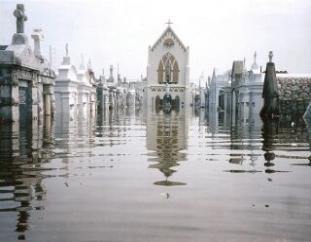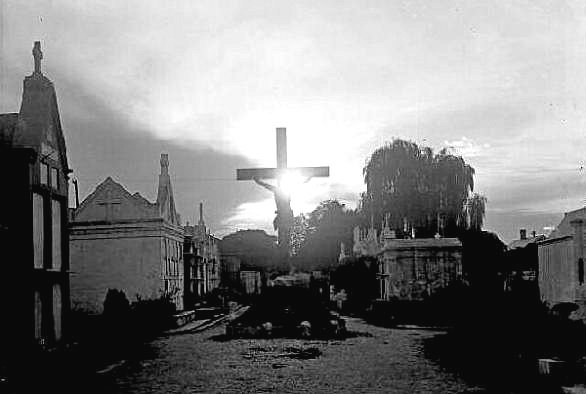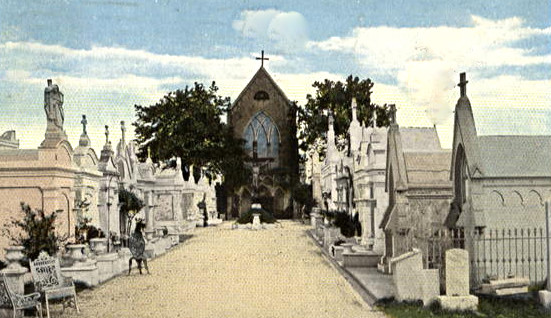
| 1913 |
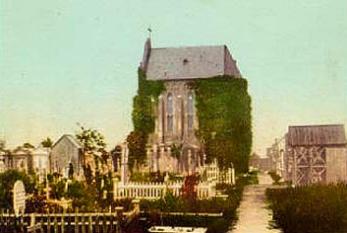
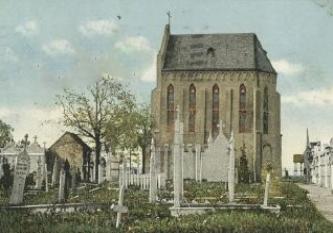
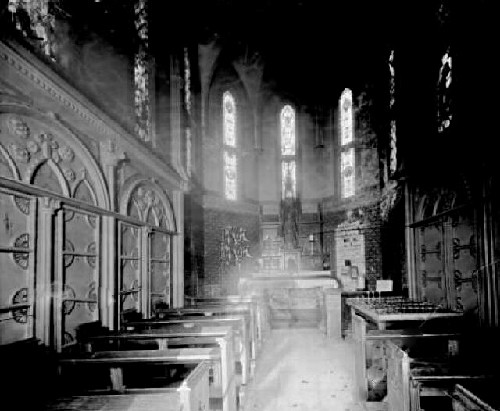
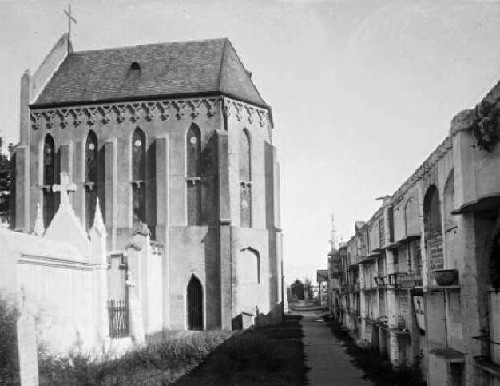
| Taken from the rear of the shrine, date unknown. |
| Until Michael sent me the top photo, this had been my favorite St. Roch picture - Easter Sunday, St. Roch Cemetery, year unknown. |
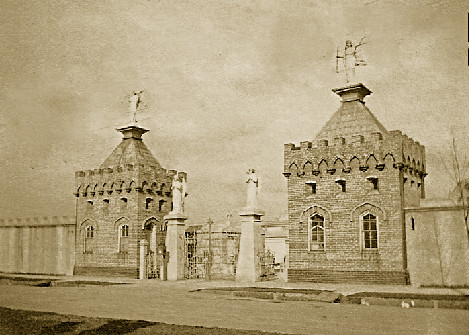
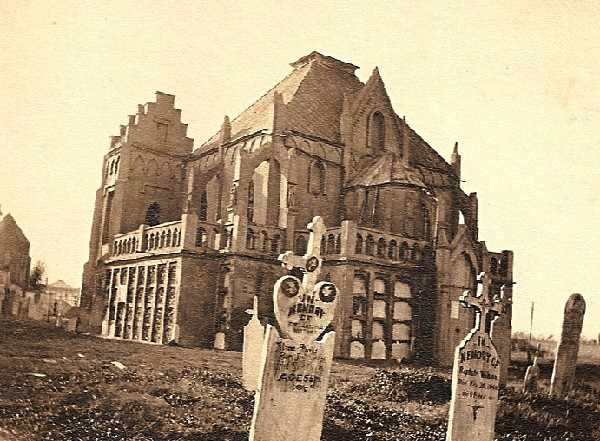
| St. Roch Chapel, Shrine & Campo Santo |
| I very much appreciate Michael Cosgrove sharing the above photo and the one directly below. Of all the pictures I've seen of St. Roch over the years, the one above is, without a doubt, my favorite. Nancy |
| Entrance gate to St. Roch Campo Santo, date unknown. |
During the desperate yellow fever epidemic of
1867, a young German priest, Father Peter
Leonard Thevis, associate pastor at Holy Trinity
Church, prayed to St. Roch to spare his
congregation. St. Roch, who is thought to have
survived the plague in the middle ages, is known
as the patron saint of plague victims. Father
Thevis promised that, if no one in his parish died
from the fever, he would erect a shrine in honor
of the Saint. Amazingly, not one member of
Holy Trinity died from yellow fever (either in
the epidemic of 1867 or 1878).
Father Thevis wanted to build not only a shrine
to St. Roch, but a mortuary chapel and a
cemetery for members of his congregation. The
cemetery would be called Campo Santo - literally
translated as "holy field" or sometimes "resting
place." Father Thevis traveled to Europe to
study the architecture of many great shrines
before beginning construction. The shrine was
designed in the Gothic style and completed in
1876.
People came to the shrine in large numbers to
ask St. Roch for help. At one time, on both All
Saints Days and on Good Fridays, thousands of
people came, seeking help for themselves or for
loved ones. Poignant notes are still left in the
shrine, requesting St. Roch's intercession.
A small room just off the altar became (and still
is today) the repository for a very unusual
variety of accoutrements of illness. Grateful
visitors have left everything from crutches to
artificial limbs to plaster anatomical parts, to
represent the healing of their afflictions and
their gratitude to St. Roch (photos on right).
-- Nancy
1867, a young German priest, Father Peter
Leonard Thevis, associate pastor at Holy Trinity
Church, prayed to St. Roch to spare his
congregation. St. Roch, who is thought to have
survived the plague in the middle ages, is known
as the patron saint of plague victims. Father
Thevis promised that, if no one in his parish died
from the fever, he would erect a shrine in honor
of the Saint. Amazingly, not one member of
Holy Trinity died from yellow fever (either in
the epidemic of 1867 or 1878).
Father Thevis wanted to build not only a shrine
to St. Roch, but a mortuary chapel and a
cemetery for members of his congregation. The
cemetery would be called Campo Santo - literally
translated as "holy field" or sometimes "resting
place." Father Thevis traveled to Europe to
study the architecture of many great shrines
before beginning construction. The shrine was
designed in the Gothic style and completed in
1876.
People came to the shrine in large numbers to
ask St. Roch for help. At one time, on both All
Saints Days and on Good Fridays, thousands of
people came, seeking help for themselves or for
loved ones. Poignant notes are still left in the
shrine, requesting St. Roch's intercession.
A small room just off the altar became (and still
is today) the repository for a very unusual
variety of accoutrements of illness. Grateful
visitors have left everything from crutches to
artificial limbs to plaster anatomical parts, to
represent the healing of their afflictions and
their gratitude to St. Roch (photos on right).
-- Nancy
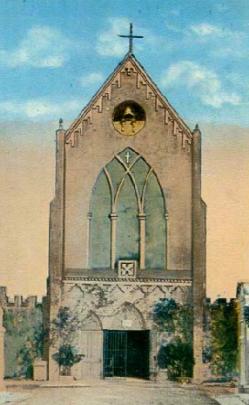
| Above, shrine interior, about 1900, below interior photos today. |
| The photo above & the one below are courtesy of Infrogmation at Wikimedia Commons. |
| St. Roch, is depicted with the dog which, according to legend, saved his life. It's difficult to see, but the dog is shown with bread in his mouth, offering it to St. Roch - a life-saving gift when he was stricken with the plague, after he had nursed many victims. |
| Above, St. Roch chapel, 1910; right, shrine, about 1920. |
| The link to this page is: http://www.thepastwhispers.com/NO_St_Roch.html Back to Old New Orleans Whispers - Home |
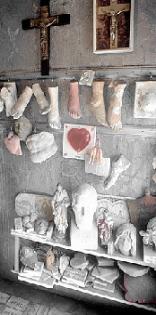
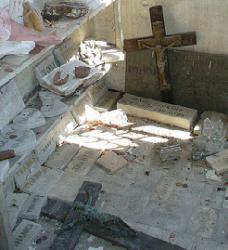
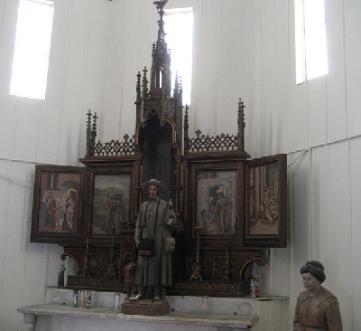
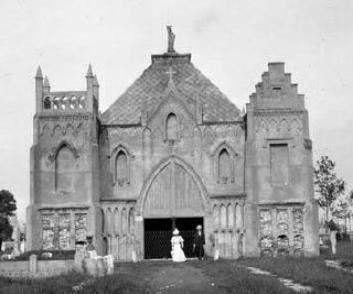
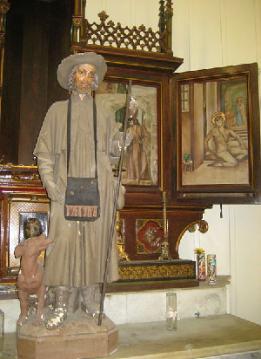
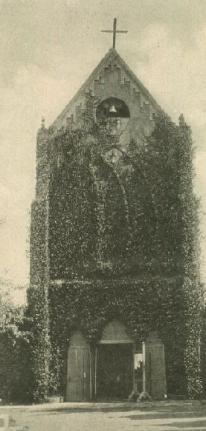
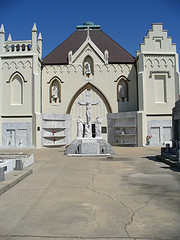
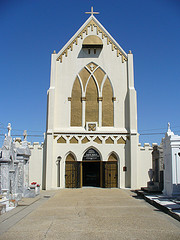
| Left, St. Roch Shrine, flooded, after the levee failures; middle & right, the chapel & shrine today; photos middle and right are thanks to travelingmermaid at Flickr's Creative Commons. |
